Top ten tips for designing a pool
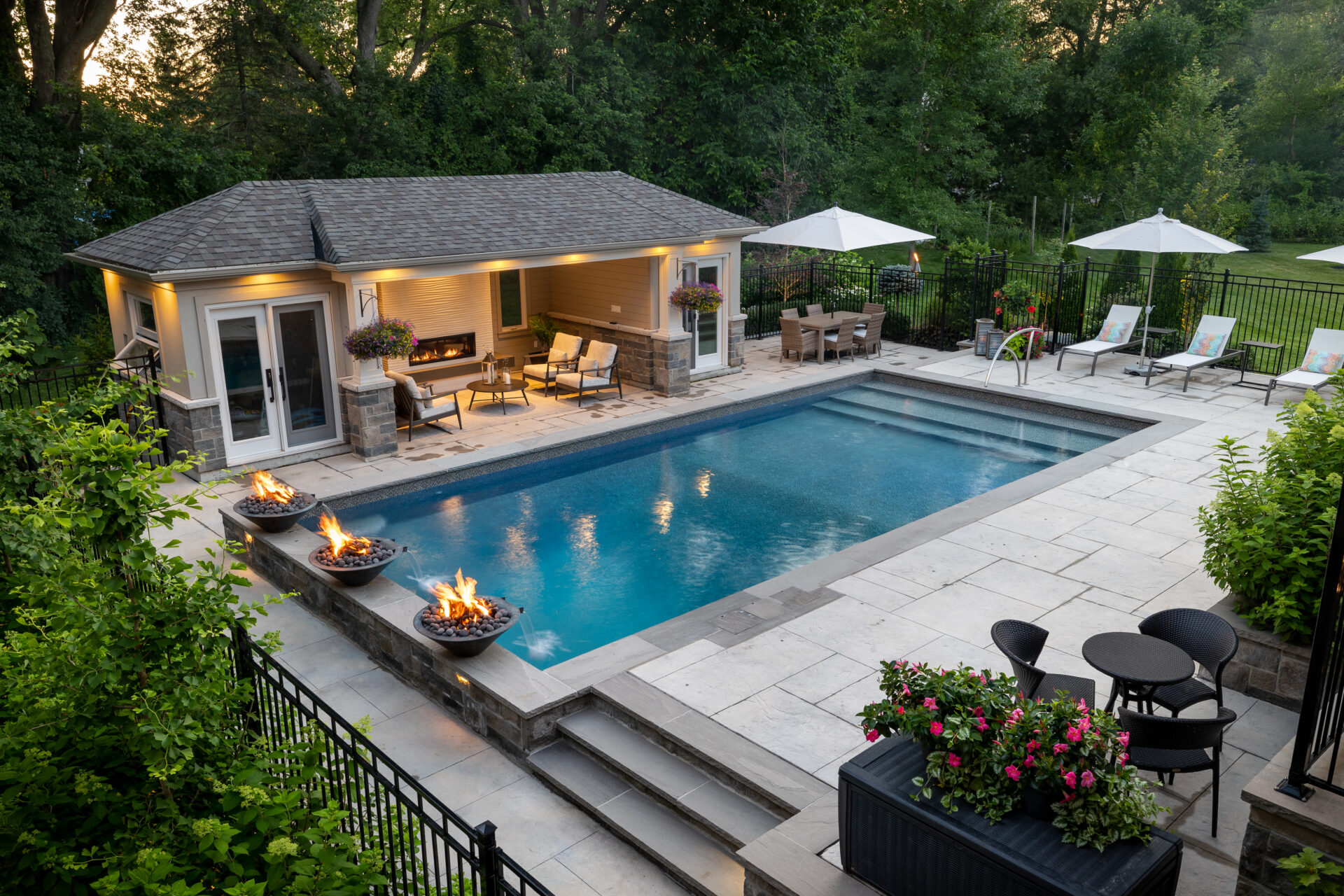
The quick answer:
Define how you want to use your pool: Figure out what you want to do with your pool. Will it be a focal point for relaxation, family fun, entertaining colleagues? Once you decide how you’ll use your pool then broaden your vision to incorporate future options such as spas, outdoor kitchens and shade structures. Even if you won’t be installing these features right away, it’s prudent to make room for them in your original design. (See Tips 1 & 2)
Know what you’re up against: Familiarize yourself with the unique properties of your yard plus any local bylaws or restrictions that could affect your plans. You’ll want to account for these factors in your original design so there won’t be any surprises later. (See Tips 3 & 4)
Make it real: Streamline your choices by setting up a budget and sketching out some possible layouts. (See Tips 5 & 6)
Other considerations: Learn about pool options (e.g., concrete, vinyl, fibreglass) along with materials for decking, walkways and other surrounding surfaces. Privacy and landscaping considerations will also affect your plans. (See Tips 7, 8, 9 & 10)
Whatever vision you have and whatever property restrictions you’re facing, there’s a perfect pool design waiting for you. Looking for inspiration? Check out these awesome swimming pool designs.
Sound daunting? It doesn’t have to be. Reputable swimming pool companies employ in-house designers who, with your input, will prepare the final design and walk you through the process of getting your dream pool.
Still here? Great! Read on for more information on swimming pool design.
The swimming pool design process often includes an array of add-on elements like water features, lighting and multi-dimensional landscaping. These special features can help you realize your vision for the ultimate backyard. But central to that vision will be the design of the pool itself.
To help you get it right, here are our top ten tips for designing a spectacular pool:

1. Purpose
Your first step is to define how you want to use your pool.
Are you looking primarily for family recreation? Exercise? Relaxation? Will you be entertaining clients and colleagues? Do you want a large lounging patio or active play area? How much shade and sun exposure do you want? Do you need to include accessibility features such as ramps?
Consider the pool’s shape: rectilinear, curvilinear, angular or free form.
Take into account the views of your pool both from the exterior and interior of your home. Think about how you can blend your pool into a natural extension of your home.
Spend some time on this. Figuring out how you want to use your pool is one of the biggest factors in determining the pool design that will work best for you.
2. Future features
Once you know how you want to use your pool, expand that vision to incorporate any future features you may want to include. Even if you won’t be installing these options right away, it’s prudent to make room for them in your final design.
Spas, water features and garden structures all ramp up your backyard possibilities. You may also want to leave room for a play area, tanning deck or outdoor kitchen, and plan for garden, fencing and special landscape features.
Many people choose to extend their pool season by incorporating a heat source such as a firepit, fireplace, patio flame or heater. Cabanas, pergolas and trellises are all also great additions to a pool area.
These options can enhance the beauty and recreational potential of your entire property. Planning for them ahead of time will help ensure that your pool design can accommodate them. To get some ideas on possibilities check out these Betz 3-D design videos.
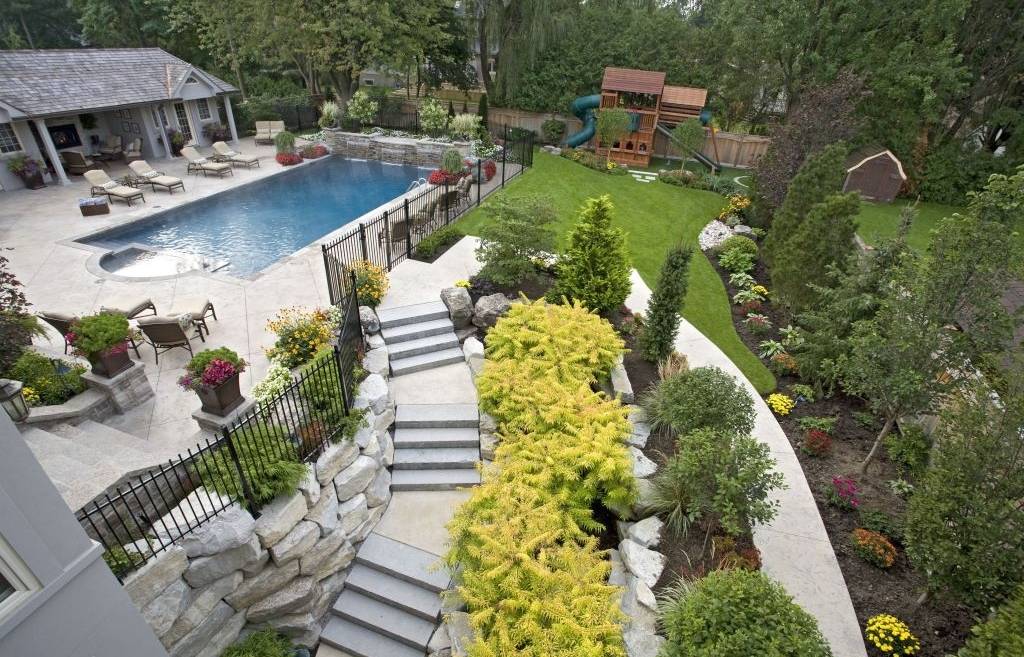
3. Property and bylaw restrictions
Once you determine everything you want for your yard, it’s time to consider factors that may temper that vision.
Look into your local bylaws, setbacks and codes (e.g., City of Toronto’s four-sided fence requirement), as well as your proximity to sensitive natural areas.
Familiarize yourself with the patterns of sunlight and water drainage in your yard. For drainage, aim to maintain positive flow and existing grades along property lines. This will avoid pooling and direct runoff into existing catchment areas.
Every job site presents unique challenges and opportunities. You may have a sloping yard with restrictions on retaining walls, or a ravine lot with established setbacks. Or you may want to retain existing trees, gardens or hedges. Some sites adjoin conservation areas, flood zones or designated green spaces, all of which require special planning. Here’s where you can rely on the skills of your professional designer. What at first presents as a liability can sometimes be turned into an asset. For example, an existing shack might be turned into a beautiful shade structure.
4. Practicalities
Once you’ve tackled official restrictions, consider practicalities.
How easy is it to move between your house and the pool area? Where will people change? Is there a convenient service area for refreshments? Where will the pool equipment and chemicals be stored? Is there a convenient place to store pool toys and accessories?
By considering practical issues early, you can make sure they are addressed in your pool design.
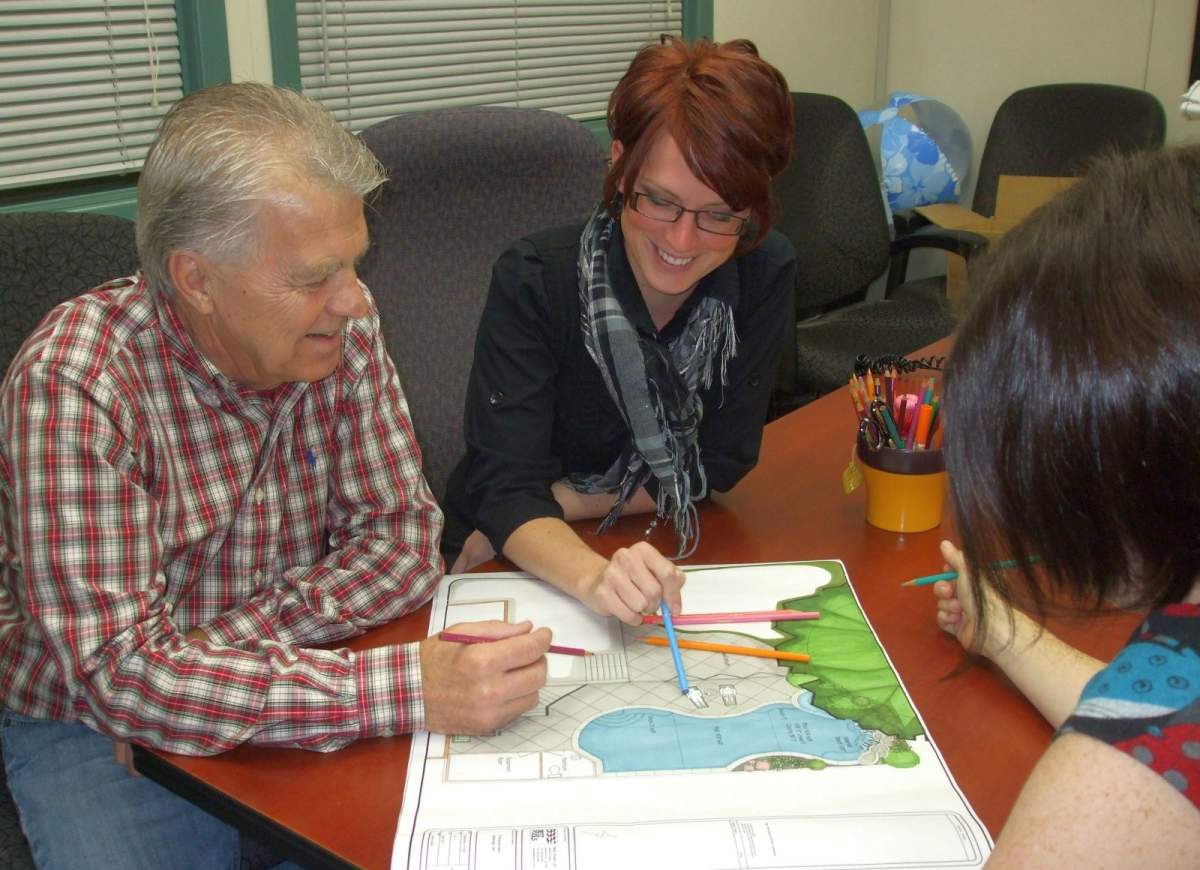
5. Set a Budget
Set up a budget fairly early in the pool planning process. If you have a clear vision of what you want and understand any restrictions that may apply, you’re ready to make it real. An experienced pool contractor can provide you with some educated numbers to work with.
A budget will help you and your pool designer grasp the scope of the project and will play an important role in design and material selection.
6. Sketch it up
Sketching up a rough layout of your yard not only translates your ideas from your head onto paper, it also delivers a comprehensive picture that can alert you to possible changes needed and inspire you to add in additional features This is the fun part, so don’t worry about creating a masterpiece.
Once you have gone through this exercise you will be in a much better position to work with an in-house designer from a reputable pool company. This will help ensure the final design is the best possible marriage of your vision with your budget.
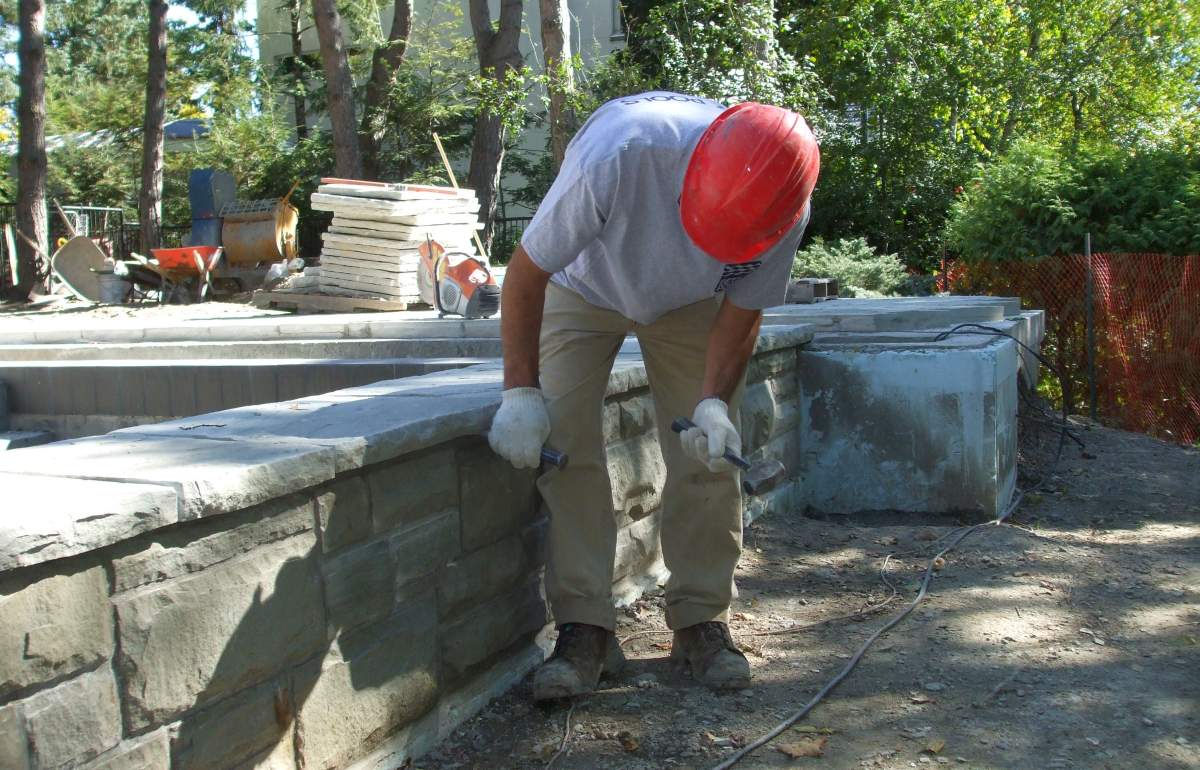
7. Pool construction
One of the biggest decisions you will make about your pool is what it’s made from. Your choices are concrete, vinyl and fibreglass.
For more a detailed discussion on the particulars of these pool materials, check out our previous blog on concrete, vinyl and fibreglass pools.
8. Materials
There are a myriad of materials available for decking, walkways and other surrounding surfaces.
The wide spectrum of choice includes stamped concrete, paving stone, flagstone, ledgerock, brick, ceramic tile, mosaic tile, Ipe hardwood, cedar and tempered glass.
You may want to use materials that complement your home’s construction. Or go with opposite styles to create a different look. Your design can emulate whatever ambience you want: a rustic cottage retreat, a Japanese Zen garden, a swanky resort or a classic Mediterranean villa.
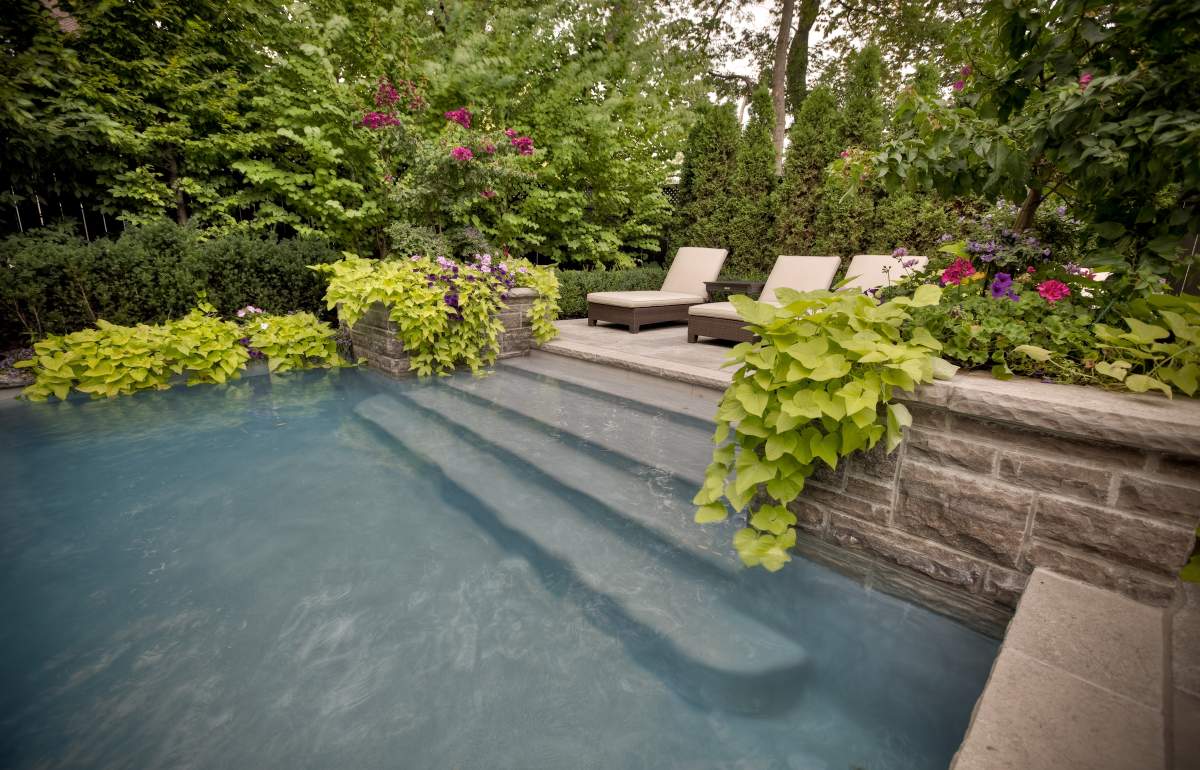
9. Privacy
Privacy, both visual and auditory, is an important concern for most people and should be worked into your design.
Strategic positioning of the pool and garden structures, creative landscaping and attractive walls, fences and trellises can deliver exceptional privacy for you and your neighbours.
10. Landscaping
Existing landscape features can affect your pool’s shape, size and location. Keep in mind that young trees and bushes will grow and alter shade patterns and the amount of leaves dropping into your pool.
Landscaping is a great way to achieve privacy and can also be used to soften hardscapes, add lushness and create a specific atmosphere. Where possible, try to incorporate existing landscape features into your design.
Remember to leave room in your overall design for the addition of new landscape options, including multi-level spaces. Need some ideas? Refer to the Betz Pools Landscaping section.
Creative landscaping is one of the best aesthetic tools you can use to complement the design of your pool.

Sharon Bauder – Landscape Designer
Betz Pools
Want even more information on swimming pool design? Feel free to get in touch.
Surfing the Internet is a good start. But your single most important step for pool information is to contact a certified pool professional to make sure you get the custom advice you need.
We’d love to hear from you! Connect with us on Facebook, Twitter, Houzz, YouTube and Pinterest.

Carol-Ann Betz, OALA – Landscape Architect
Betz Pools
